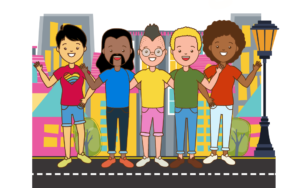Young people are not usually asked about the types of violence they experience and how that violence makes them feel unsafe. Statistically, groups who hold less systemic power such as young women, youth of colour, Indigenous youth, newcomers, youth living with disabilities, and LGBTTIQQA2S youth (Lesbian, Gay, Bisexual, Transgender, Transsexual, Intersex, Queer, Questioning, Asexual, 2-Spirited) are at a greater risk of experiencing violence.
INTRODUCTION
Violence experienced by young people is no less important than violence experienced by an adult; When a person feels unsafe or experiences violence it affects the person and the community they live, work, study or play in. If a community is viewed as dangerous or unsafe, how can a young person or group of people promote safety for all its residents?
Change can take some time and may seem far away but we believe that change can and is happening. Your knowledge is valuable, and we want to know what you need and what you want to make your relationships, schools, community spaces, and neighbourhoods a safer and supportive place for all.

